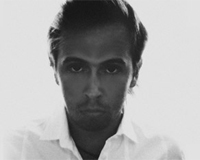 Even if you've never heard of Andreas Shabelnikov, you've almost certainly seen some of his work.
Originally from Latvia, he's a freelance interactive designer and photographer who's been involved in a number of high-profile site designs, including Rise of the Planet of the Apes, The Last Airbender, Sweeney Todd, and the Stardust movie site.
Here Andreas talks about how he got started designing for such large studios, what his favorite projects have been, and his design process.
And he offers up some tips for new designers who would like to follow a similar career path.
Even if you've never heard of Andreas Shabelnikov, you've almost certainly seen some of his work.
Originally from Latvia, he's a freelance interactive designer and photographer who's been involved in a number of high-profile site designs, including Rise of the Planet of the Apes, The Last Airbender, Sweeney Todd, and the Stardust movie site.
Here Andreas talks about how he got started designing for such large studios, what his favorite projects have been, and his design process.
And he offers up some tips for new designers who would like to follow a similar career path.
Where do you look for inspiration, either before starting a project or if you get stuck during the project?
It totally depends. I mean, the most important thing to consider is whatever deadline you have to meet. Sometimes, there’s no time to browse through similar sites to see what others are doing. For example, if a client calls on Friday evening and says he wants to see comps early Monday morning, there’s no time for anything. You just have to do it. Just open Photoshop and go with it. And yes, sometimes I fail when forced to do that, but that’s just part of the risk of this business. If the project has a better time frame, you can always learn, research, think, plan, brainstorm, and try sketching on paper. You can think more and maybe spend a sleepless night thinking of what you want to create. Inspiration is everywhere for me, whatever is around me. Photography and film, though, are the leading sources of inspiration for me. Above is a rendering of the elevator for the DEVIL movie site, created in Maya.
Above is a rendering of the elevator for the DEVIL movie site, created in Maya.
What has your favorite project been to date?
Favorites are always personal projects, of course. It’s something where you are your own boss. But there is one site I’m very proud of, where I art directed: the website for Rise of the Planet of the Apes. I had to do a lot of work for it, even an iPad/iPhone version of the site, plus ads. Also, there’s something I’m currently working on, which will be great to show off. But you’ll have to stay tuned, I can’t reveal it yet. Rise of the Planet of the Apes
Rise of the Planet of the Apes
What’s the process like for working with big studios?
I don’t know. Big, small, there are bad and good people everywhere, so it always comes down to the team you’re working with. Recently, I’ve been pretty happy with the people I get to work with. Big studios are more serious, and give you more experience. You get to work with their Creative Directors, and in the end, you’re paid well. So it’s an awesome experience. Slowly, you can start applying what you’ve learned from the big guys into the smaller projects and companies. I think it’s a good collaboration that can bring a lot of success in your career.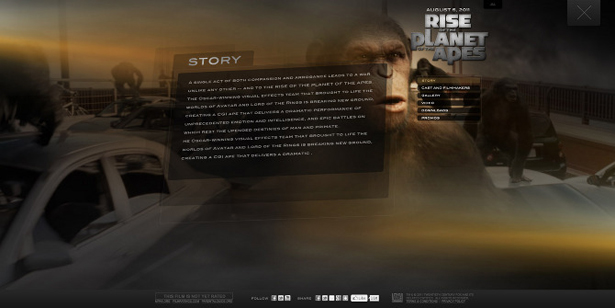 Rise of the Planet of the Apes
Rise of the Planet of the Apes
What’s it like to take on a project like Rise of the Planet of the Apes and have it become such a popular movie? To know that your work is being seen by millions of people? Do you feel like it’s a lot of pressure?
When you get a project like Rise of the Planet of the Apes, it makes your hands shaky! Planet of the Apes is a very famous film, and this one was the next step in the established series. When you are making film sites, there’s always times when you’re under pressure, because you know you have to do more than your best work, because the film could be a massive premiere to the world. When I started to work on my part of the project, it was 24/7, no weekends, no spare time, sometimes no sleep. You can’t allow your brain to stop, or for inspiration to leave you. A lot of people in interviews ask how you feel when you’re uninspired or stuck. This was a project where I had the opposite feeling. Even if you’re spending nights working on it, you’re still enjoying it and putting your soul into all the things you do for it. I was also designing wallpapers, banners, and AIM icons. Some people call this part of the job boring, but for me it wasn’t. This project was a part of my life for two months. I hope I’ll feel this way about a project again, and that something like this project will come along again. In the end I’m very proud of what I’ve done. It gives me more energy to create more things. When you see the poster you’ve done for a movie on the street, it makes your heart beat faster. Mars Needs Moms
Mars Needs Moms
What kind of budgets, timelines, and processes do you go through when creating a website for a major movie production?
Usually, the deadline is “yesterday.” You have to wait for a lot of design assets. You have to wait for the trailer to come out. Sometimes, you have to work with just the high-res trailer to present your design ideas. Other times you only have some text about the film you’re working on and you have to design from that. It varies. Again, there are good and bad projects. I can’t talk about budgets because of contract issues. The perfect project is when you get key artwork, a preview of the film, photography from the production of the film, a creative direction briefing, and other key things. Once you have all these, it’s more satisfying to start the design process. It doesn’t happen often, but I wish it was always like that. If you could design a site for any company or product, what would it be? I’d love to art direct the new Mercedes site. Do a photo shoot for some cars, retouch, some motion ads, the whole deal. I’d love to do that, and photography is my passion, so I really hope that sometime soon there will be an opportunity for me to work on a project like that.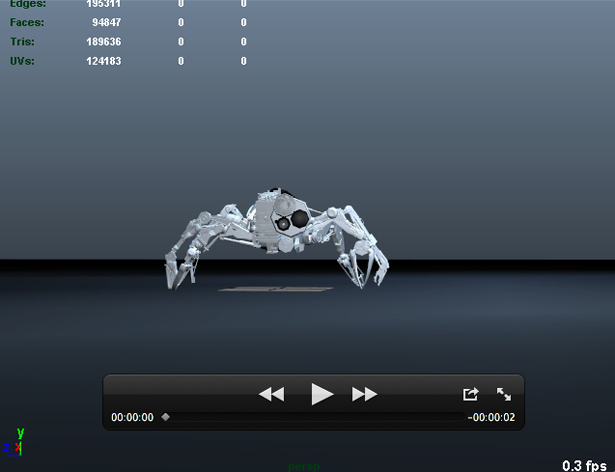 Above is an image of some in-progress animations and artwork for the Mars Needs Moms site.
Above is an image of some in-progress animations and artwork for the Mars Needs Moms site.
What’s your design process like? What steps do you take throughout a project?
The biggest problem I run into is client briefings. A lot of companies you work for may not know what they want, and you can spend weeks comping, drawing, and sketching, and then in the end they choose one of the first things you did for them. So for me, I try to get approval of a briefing and wireframes first. A clearer idea of what they want and what you need to do is always going to result in a better result. So both sides will eventually be happy, since the work process will be more exact. There are many freelance jobs on the market now, so I try to choose projects with a clear briefing whenever I can. Once I sign with a client, I usually have a lot of creative freedom, so first I try to come up with some ideas in my sketchbook, write down some thoughts, Google for references, and then go from there to come up with an idea. I always give options to my clients, too. If I have to design a website, for instance, I’ll show them at least two different comps.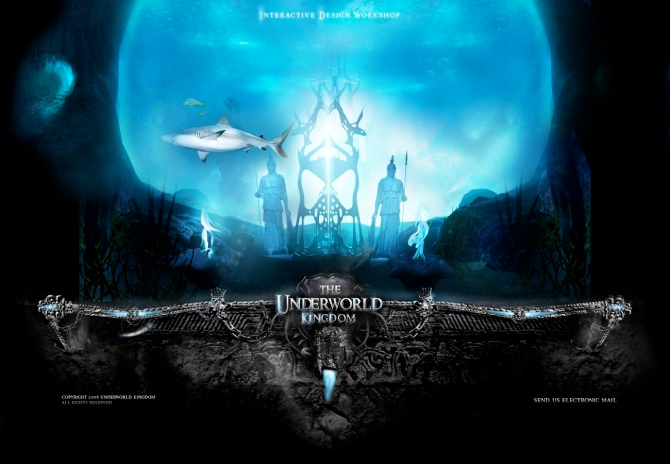 The Underworld Kingdom
The Underworld Kingdom
How do you deal with criticism on the projects you’ve done? Have you ever had someone just absolutely trash your work?
I think it depends on the person it’s coming from. Every designer has to go through criticism and times when people give negative feedback. Constructive criticism is always good, when it comes from a person you respect and just maybe, if he’s involved in design, you can learn a lot from him. You just have to filter what people are saying a bit. Another thing that happens sometimes is clients will say things like “This was done in 10 minutes” or “My son can do better” or “This is not the quality that your portfolio shows.” You have to really get used to this kind of thing, because it can really kill your creativity. Of course you’re going to stop working with this client, but it will still affect your future work.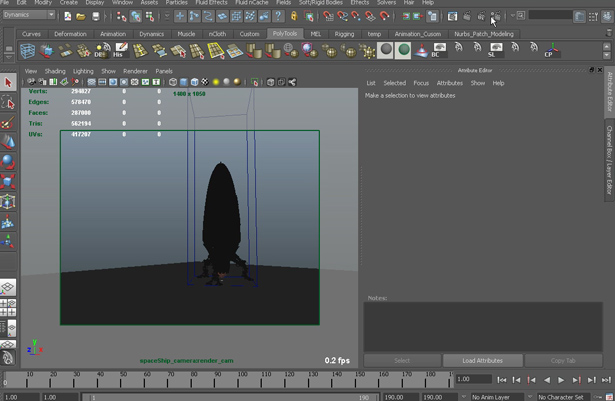 Another in-progress shot from Mars Needs Moms.
Another in-progress shot from Mars Needs Moms.
How do you deal with a client who insists on doing something you don’t believe will be good for their project? Have you ever straight-out refused to do something a client wanted (or requested they leave your name off the final work)?
Ha, well, we all have to pay bills. The thing is, you get a feel from the start how a project is going to go in the future. So, it’s a matter of your budget, and if you really need the work at that time. I will be honest, and I’m sure 100% of many famous studios are doing this kind of work, when they are just making the client happy, with the ugliest work in the world. Of course it will not go in your portfolio, or your name won’t be on the copyright. But it’s the 21st century and we have to get paid to live. On any project, even if the client is difficult, you’re trying to do your best and trying to get them to change their mind and listen to your opinion. Sometimes it works, and sometimes it doesn’t. In the worst cases, you’ve done work for the client that you’re unhappy with and they’re unhappy with, and you have to return their deposit, even after you’ve done some work for them. That’s another point: it’s a must to have a deposit for any kind of work you’re doing as a freelancer. There are many clients out there who won’t pay you on time, or skip paying you entirely. It’s a risk, yes. Big companies pay net30 or even net90, so you have to be prepared to be paid in 90 days rather than right away. But over the years, freelancers talk and basically we know what the standards are for payment from different companies. And if there’s a huge delay in payment without any reason, we all find out about it and know to ask for a deposit next time. Again, it’s always better to choose the work you do. It means less stress, more inspiration, and more positive emotions. Consider making your bills lower and enjoying life! When I was living in Greece, on an island, and the rent was around 350 USD, I wouldn’t take on a project or client I didn’t like. There have been times when the project was interesting, but the project manager was impolite, so you have to skip that as well.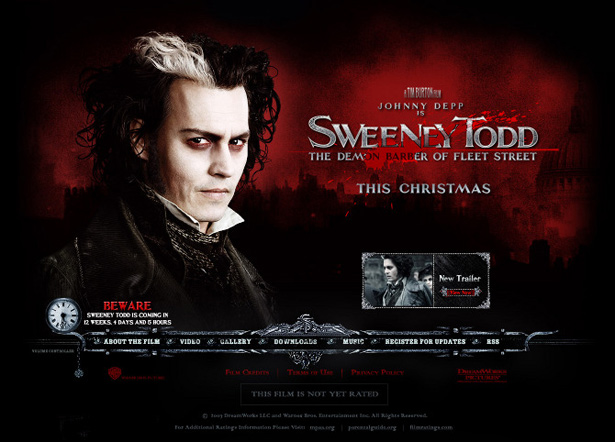 Sweeney Todd
Sweeney Todd
You started working with some pretty big companies while still a teenager. How did you connect with these kinds of companies and start working with them?
I’ll be honest here: I started doing some comps and sketches of projects for big companies, just for myself. Whenever I would see something and think I could make it better, I did. Probably the first thing I had in my portfolio was such a redesign for Audi.com. It wasn’t even pitch work, it was just something I did for myself. I just liked what I was doing on the side. Soon I had opportunities with some small commercial projects, and then I started emailing companies I dreamt of working for. Some people answered and gave me the opportunity to pitch for big companies. Many of these I lost, but some of the companies gave me good feedback, and on some my ideas were approved. I think it’s about the kind of goals you set. I was very focused on reaching where I am now, and I always did my best and worked a lot. However, now that I’m here, sometimes I prefer smaller projects. Big clients and big projects are always nice for your portfolio, but it’s stressful, and ages you prematurely! A making-of shot from the site for the movie Splice of the creature creator application. The laboratory here was created entirely from scratch in 3D.
A making-of shot from the site for the movie Splice of the creature creator application. The laboratory here was created entirely from scratch in 3D.
What advice would you give to someone who wanted to follow a similar career path to yours? How would you recommend they start?
Learn, study, experiment. If you’re still at school, spend time thinking about projects you’re going to do rather than going out with friends and figuring out how to get drunk faster. You have to live with design and think about it all the time. Set your goals and work for them. Don’t think about the money. Don’t waste time hoping that Spielberg will call you tomorrow. Just think of it like working out in a gym. You can’t come once and expect to look like an athlete the next day. Be patient and follow the industry, talk to people, visit blogs for inspiration, and send out emails to art directors or designers whose work you like. Many of them will ignore you (they ignored me when I was a kid), but some of them will be very helpful and inspirational for you. Don’t focus on too much at the start, and don’t think that just because you know Photoshop like the back of your hand that you’re a superstar designer. Try copying work you like for your own educational purposes. Try to recreate it and add your vision into it, and you’ll find your own style.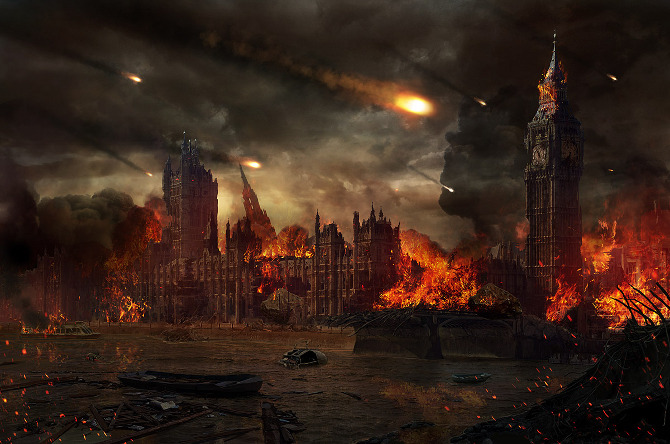 End of the World II
End of the World II
Where do you see the future of your work going? Where would you like to be in five or ten years, career-wise?
Hopefully I will have my own studio built close to the beach on any of the south coasts. We’ll produce websites, and do photography and filmmaking. I don’t really aspire to launch any kind of big ad agency one day and become a millionaire. I’d like to do what I really enjoy and live with that. Smaller budgets, smaller clients. It makes it possible to take it easy and enjoy what you’re doing. If I was after money, I’d move to NYC or someplace similar, but I prefer a small town close to the sea, where the sun is shining 300 days a year! What do you think of Andreas' work? Which sites strike you the most? Please share your thoughts below...Andrew Aden
You can see all of Andrew’s work at his site AndreasWorks.com and also at Dsire. You can also keep up with his latest projects by following him on Twitter @ashabelnikov
Read Next
15 Best New Fonts, July 2024
Welcome to our monthly roundup of the best fonts we’ve found online in the last four weeks. This month, there are fewer…
By Ben Moss
20 Best New Websites, July 2024
Welcome to July’s round up of websites to inspire you. This month’s collection ranges from the most stripped-back…
Top 7 WordPress Plugins for 2024: Enhance Your Site's Performance
WordPress is a hands-down favorite of website designers and developers. Renowned for its flexibility and ease of use,…
By WDD Staff
Exciting New Tools for Designers, July 2024
Welcome to this July’s collection of tools, gathered from around the web over the past month. We hope you’ll find…
3 Essential Design Trends, July 2024
Add some summer sizzle to your design projects with trendy website elements. Learn what's trending and how to use these…
15 Best New Fonts, June 2024
Welcome to our roundup of the best new fonts we’ve found online in the last month. This month, there are notably fewer…
By Ben Moss
20 Best New Websites, June 2024
Arranging content in an easily accessible way is the backbone of any user-friendly website. A good website will present…
Exciting New Tools for Designers, June 2024
In this month’s roundup of the best tools for web designers and developers, we’ll explore a range of new and noteworthy…
3 Essential Design Trends, June 2024
Summer is off to a fun start with some highly dramatic website design trends showing up in projects. Let's dive in!
15 Best New Fonts, May 2024
In this month’s edition, there are lots of historically-inspired typefaces, more of the growing trend for French…
By Ben Moss
How to Reduce The Carbon Footprint of Your Website
On average, a web page produces 4.61 grams of CO2 for every page view; for whole sites, that amounts to hundreds of KG…
By Simon Sterne
20 Best New Websites, May 2024
Welcome to May’s compilation of the best sites on the web. This month we’re focused on color for younger humans,…














